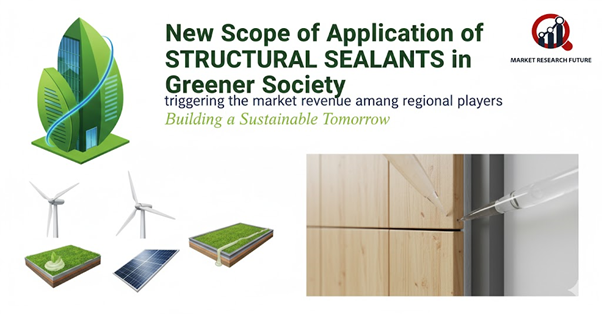Green Building Trends to Fuel Regional Growth in the Structural Sealants Market

Introduction
Structural sealants, a key component in adhesives and sealants, play a critical role in virtually every industry, from electronics and automotive to packaging and construction. Their unique ability to hold components together while accommodating movement has made them indispensable.
With growing urbanization, industrialization, and construction activities, the demand for structural sealants is witnessing steady growth globally. Asia Pacific, North America, and Europe remain key markets, while the shift of manufacturing bases toward Asia Pacific provides additional growth opportunities.
Construction: The Primary Growth Driver
The building and construction sector is fueling the demand for structural sealants. Modern sealants provide elasticity, stability, and low cohesive strength, making them ideal for high-rise buildings, airports, luxury hotels, smart cities, and mega-event projects like Expo 2020 Dubai and FIFA World Cup 2022 in Qatar.
Greener and VOC-free Sealants Gain Traction
Environmental sustainability is reshaping the structural sealants market. Low-VOC, 1K-component sealants reduce emissions, improve indoor air quality, and minimize material wastage. Acrylic-based sealants, easy to apply on non-porous substrates like glass and sanitary fittings, are seeing high adoption.
Green building initiatives, such as LEED certifications, are accelerating the shift toward eco-friendly sealants in countries like the US, Canada, Italy, Australia, and the Middle East. Manufacturers are increasingly pressured to deliver sustainable solutions without compromising performance.
Regional Opportunities
- Middle East & Africa: Rapid infrastructure development, airport expansions, and mega-events are boosting demand.
- Asia Pacific: Government policies, rising urbanization, and construction boom in China and India are driving market adoption.
- North America & Europe: LEED-certified green buildings and retrofitting projects support consistent growth.
Competition Landscape
Tier-1 global players dominate the market, including BASF SE, Asian Paints, Pidilite Industries, H.B. Fuller, Dow Corning, Henkel, and 3M, with regional players capturing niche segments. Companies are focusing on R&D, mergers, and production of bio-based, sustainable sealants to retain market share.
Outlook
The market for structural sealants is entering a phase defined by sustainability and innovation. Green and bio-based sealants are expected to dominate, paving the way for a future where construction is more energy-efficient, environmentally friendly, and cost-effective.
Manufacturers investing in eco-friendly technology and targeting high-growth regions are likely to see the highest returns.